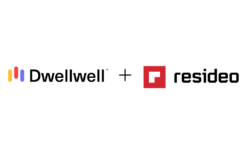Why Providing Convenience to Customers Is Key
A good many monitoring center customers have strong preferences on how they would like to interact with an associate.

(Image: Looker_Studio/stock.adobe.com)
There is one thing that is certain about how we perceive a customer experience, and that is we remember it for a very long time. We all have different expectations, requirements and manner of getting things done, but customers do too, and once we part there is either a lasting smile on our faces or a sour taste in our mouths that just won’t go away. Still, success in any business depends on not just walking away from each other with preconceived notions of how a customer experience — good or bad — will play out. Follow-up or cross ’em off.
Today’s consumers are tech-savvy, impatient and sensitive to a level of competence that is the crux of a successful business experience, so there is always room for improvement. To be kind, not every business appreciates that. Allow me to share a few experiences many of you can relate to that will help make that point.
A home warranty company: It doesn’t have to be a home warranty company for you to recognize it … offshore call centers, very poor web tools for communication, no ability to speak with supervisors and agents that just flat-out lie to you to get you off the calls as fast as they can. While the home warranty space is full of these types of actors, this particular company will not ever get any repeat business from me, and I say that even though they have paid out on several claims. The pain and frustration in dealing with them just isn’t worth the trouble.
Dish Network: I have been a Dish customer for a number of years, and the other day I called them. The agent answered the phone, “Hi, my name is Mary, and I am talking to you from San Antonio, Texas. How can I help you today?” Look how much I know already. The conversation had clear, static-free audio with no delay and I had no problems understanding what Mary was saying; just being able to effectively have a conversation made the call significantly better. Dish Network has excellent follow-up emails to make sure the problem was resolved and the agents are empowered to make changes on their own without a lot of hassle and reasonably fast.
Sirius Radio: I needed to remove a couple radios from the account because I no longer had the vehicles. To my delight, when I went online, they gave me three different ways to conduct this transaction: I could use voice and call them, SMS, or a web chat application, and I could pick the one that I wanted to use. I was using my cellphone and was multitasking as usual, so I opted for SMS with an agent. That worked perfectly for me as I had to work on it using the device that was in my hands at the time.
In the monitoring business, consumers almost always take this journey during what must be considered a very stressful time in their lives, so it’s tremendously important to be able to meet the expectations of how the consumer feels the interaction should go. It’s just as important to keep in mind that, even before the call, many consumers have strong preferences on how they would like to interact with a monitoring center. Let me expand on that a little bit.
When I had the interaction with Sirius, I chose to use SMS as a medium; this was my choice that I picked to use because it was convenient for me at that moment in time. The expectations of consumers today are that, like me, they want to be able to choose how they interact with a monitoring center. The days of voice-only are long gone, and consumers all have an awareness of their many other options, have expectations of how they should work best and have preferences suited to their immediate circumstances.
In the fraught circumstances that characterize a conversation with a security monitoring center, their preferences are extremely important to them. It should be just as important to us as an industry, even on a routine call. Of course, allowing a consumer to pick how the experience will go brings additional complexity to the equation. Just being able to articulate to dealers and consumers what the options are is challenging enough. Lurking in the background is the infrastructure you need to be able to offer and support their choices.
Moreover, there are few assumptions to build on; we could once depend on the fact that almost everyone had a telephone … and only a telephone. But when you start to think about all the various ways consumers have today to interact with providers, there are a lot of options built on myriad technologies: snail mail, email, SMS, mobile apps, chat and chat bots, web applications, IVR, two-way audio, just to name the common ones. And then there is that space between the technologies and the consumer. It is not enough to have such advanced technologies available. You must have easy ways for the consumer to be able to pick and choose these methods wherever, whenever and if ever they want to.
The entire ecosystem that our industry has had in place for the past 20 years is now in a huge state of flux to get all these options and methods set up and working. It’s an expensive and daunting task, but it’s what consumers want and are demanding. What is even more important, if we are to fulfill our mission, is that what we do has to work, not merely technologically but in fulfilling the role we intend.
A good example of that is a voice call, the staple of the call center industry. It most certainly has a place among other consumer choices, but statistically, in recent times, 70% of all outbound calls are unanswered while 90% of SMS messages are viewed. That statistic is revealing: only offering voice calls is not going to allow you to fulfill your mission.
Two lessons, then: First, partner with vendors that understand how to make this all happen and are willing to make the investments in time and money to not only get there but to keep making these investments in technology and processes to stay current.
Secondly, no matter what kind of organization you run, you need to pay attention to the customer experience in all facets of your business, not just the monitoring services, but everything from sales to service to billing. Build your business so consumers like interacting with you, never dread interacting with you, and never walk away with a sour taste in their mouths.
If you enjoyed this article and want to receive more valuable industry content like this, click here to sign up for our FREE digital newsletters!

Security Is Our Business, Too
For professionals who recommend, buy and install all types of electronic security equipment, a free subscription to Commercial Integrator + Security Sales & Integration is like having a consultant on call. You’ll find an ideal balance of technology and business coverage, with installation tips and techniques for products and updates on how to add to your bottom line.
A FREE subscription to the top resource for security and integration industry will prove to be invaluable.








